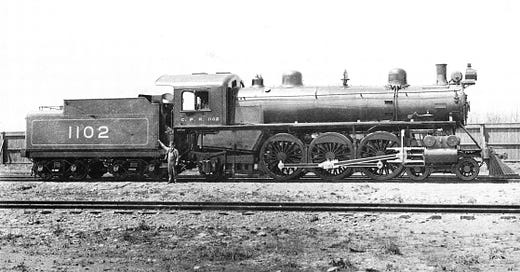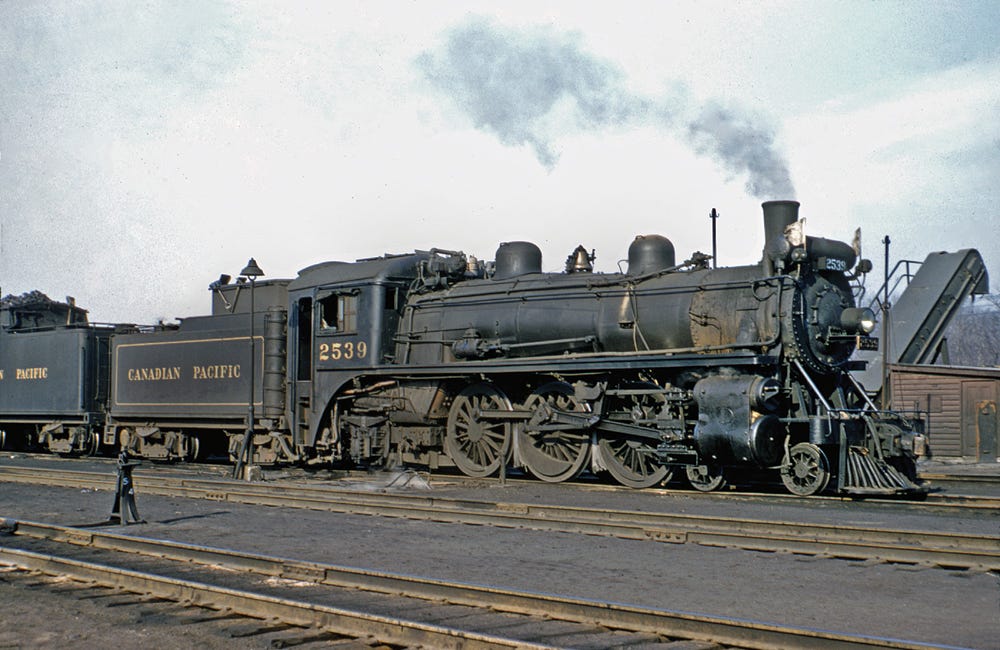Features and differences among the original CPR G2 class engines
We’re going to look at the commonalities and distinctions among the members of the Canadian Pacific’s G2 class as they came out of the Angus Shops, Montreal Locomotive Works, and Schenectady Locomotive Works.
Our previous installment gave an overview of the 166 locomotives in this class:
The Canadian Pacific G2 class 4-6-2, part 01
Under sullen skies, the temperature is 40ºF around the St. Luc shop tracks on Saturday, March 29, 1958.
The Canadian Pacific G2 class 4-6-2, part 01
Some anomalies
This is one I cannot explain, except perhaps an error on the part of Omer Lavallée in his book Canadian Pacific Steam Locomotives. Lavallée breaks down the six sub-classes of G2 as follows (after their final renumbering):
G2a 2500 – 2502
G2b 2503 – 2508
G2c 2509 – 2527
G2d 2528 – 2602
G2e 2603 – 2660
G2f 2661 – 2665
However, Canadian Pacific shows the following numerical breakdown in numerous motive power records (the discrepancy being where the G2e class ends and the G2f class begins):
G2a 2500 – 2502
G2b 2503 – 2508
G2c 2509 – 2527
G2d 2528 – 2602
G2e 2603 – 2609
G2f 2610 – 2665
As I cannot consult my late author colleague, I’m going to go with the source documents—the CPR motive power records—as correct. If anyone can convince me otherwise, I’m all ears.
Now, let’s examine some of the characteristics which the members of the sub-classes share, or how they differ. Keep in mind we are describing the locomotives as-built. The rebuilding of most of the class introduced numerous upgrades and variances.






